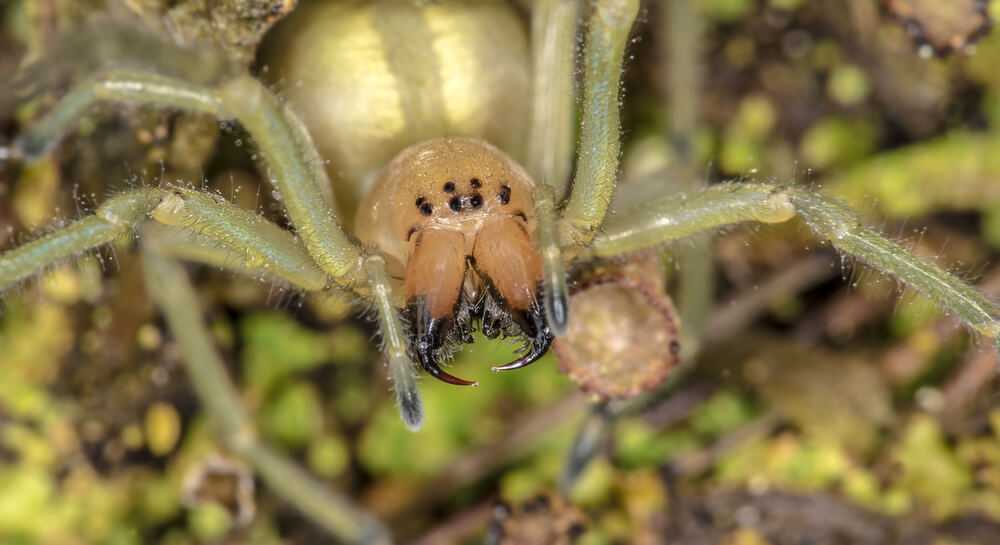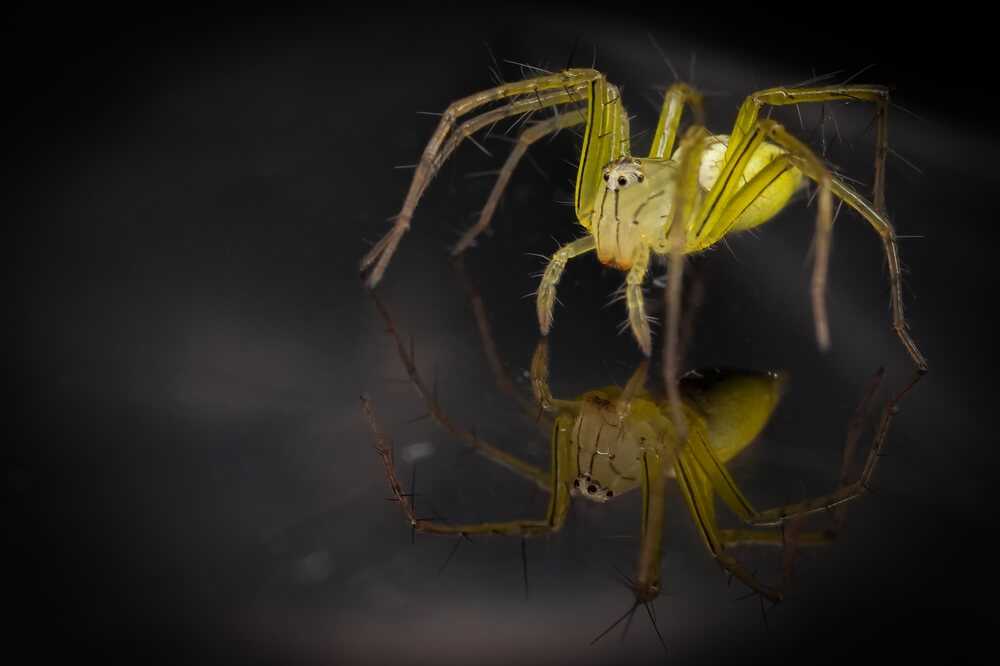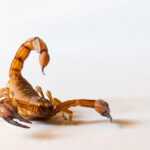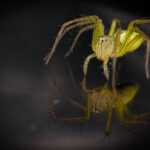Yellow Sac Spider Facts: Identification, Prevention, and Treatment
Worried about yellow sac spider activity in your home? These spiders are common and can cause painful bites. This article will help you identify yellow sac spiders, understand their behavior, and learn how to prevent and treat bites.
Critical Observations
- Yellow sac spiders are small, nocturnal predators identifiable by their pale yellow-beige coloration and orange-brown abdominal stripe, often confused with more dangerous species like the brown recluse.
- They thrive in diverse environments, seeking shelter in gardens, urban areas, and indoors during colder months, necessitating proactive management to prevent infestations.
- Bites from yellow sac spiders can cause localized pain and swelling, but severe reactions are rare; prompt first aid and monitoring are essential for effective management.
Yellow Sac Spider Overview
Recognizable by their distinctive pale yellow-beige coloration and contrasting dark brown features, Yellow sac spiders are a notable member of the Cheiracanthium genus. Despite being small in size, typically between 0.15 to 0.31 inches long, these creatures often escape attention. They can be identified by an orange-brown stripe on their abdomen. They’re sometimes incorrectly thought to be the more dangerous brown recluse spider due to some resemblance.
Residing across diverse environments from gardens to urban regions, these adaptable sac spiders engage in nocturnal pursuits and demonstrate opportunistic predation tactics.
It is also worth mentioning that yellow sac spiders fall under the wider classification of Clubioninae within arachnology — a subfamily encompassing several species known for sharing similar habits and physical traits.
Identifying Yellow Sac Spiders
It can be difficult to spot yellow sac spiders due to their diminutive size and nondescript coloring. They are commonly pale yellow-beige, adorned with dark brown markings and feature a distinctive orange-brown stripe along the abdomen, ranging in length from 0.15 to 0.31 inches. Their natural camouflage against light-colored surfaces complicates identification efforts, as seen with the American yellow sac spider.
People often incorrectly identify these spiders as brown recluse spiders since they share a somewhat similar color palette. Unique traits of the yellow sac spider include its characteristic abdominal stripe and relatively smaller stature compared to others. These arachnids tend toward hiding away in quiet corners where they spin silk-like retreats that serve for protection during the day and act as a base for nocturnal hunting expeditions.
Commonly Encountered Pennsylvania Spiders
In Pennsylvania, yellow sac spiders are frequently encountered in environments from gardens to urban areas. They inhabit vegetated areas and human structures, adapting well to diverse surroundings. Their vertical crawling on walls and structures is a notable identifier.
Pennsylvania also hosts spiders like brown recluse bites and black widow. Although less harmful, yellow sac spider bites can cause discomfort. Knowing their habitats and behaviors aids in effective identification and management.
Habitat and Distribution

Sac spiders, known specifically as yellow sac spiders, are versatile inhabitants found in diverse settings that range from cityscapes to farms and woodland areas. They typically make their homes outdoors in locations like garden spaces, underneath foliage, or amid organic refuse—contributing significantly to the management of pests. The ability of these arachnids to adjust easily allows them to be common across both untouched environments and artificial structures.
The search for refuge by these arachnids often leads them inside buildings, especially when autumn begins, and sustenance becomes limited along with worsening weather conditions. Understanding where yellow sac spiders prefer to dwell is essential for effectively controlling their entry into places they are not wanted.
Natural Habitat
Yellow sac spiders thrive in areas abundant with organic matter. Their habitats typically include gardens and layers of leaf litter, as well as proximity to woodpiles and beneath stones, which they call home. During the day, these arachnids construct silken retreats under various kinds of debris or inside structures for concealment, shielding them from predators and inclement weather conditions.
These sac spiders are also adept at securing homes within trees and shrubs, along with a variety of human-made structures. Their skillfulness is evident when they spin silk hideouts at junctures where walls intersect ceilings or other wall surfaces, demonstrating their ability to adapt effectively to ensure survival across different environments.
Indoor Habitats
As the cold sets in during early autumn and winter, yellow sac spiders commonly migrate into homes searching for warmth and food. They prefer to settle within man-made structures where they construct silken nests for shelter, typically located at corners of walls and ceilings. Maintaining cleanliness by removing webs and cutting off their food supply can help keep these invasions at bay.
These spiders tend to conceal themselves in secluded, dark areas of a home, which underscores the importance of keeping spaces clean and free from clutter. Awareness of their preferred indoor habitats empowers homeowners with the ability to implement preventative measures against infestations.
Global Distribution
Yellow sac spiders, native to the Americas, have extended their reach beyond to include regions in Europe, Asia, and Africa. Their presence across multiple continents is a testament to their remarkable capacity to adapt to a wide range of environmental conditions. These arachnids flourish throughout North and South America in both temperate zones and tropical environments.
The omnipresence of sac spiders around the world highlights the importance of being knowledgeable about their various behaviors and natural habitats. As they are found everywhere, from cities to farmlands and woodland areas, comprehensive insights into these aspects are crucial for managing them effectively.
Diet and Behavior
Yellow sac spiders are nocturnal predators, mainly hunting garden pests and other spiders, even their own species when food is scarce. They use silk to create small nests for ambushing prey, highlighting their opportunistic nature. Unlike traditional web-builders, they actively hunt at night, making them intriguing subjects of study.
Knowing their diet and behavior helps manage their presence in homes and gardens. Understanding their eating habits and hunting patterns allows homeowners to better predict their movements and take preventive measures.
Prey Preferences
Primarily preying on insects and fellow arachnids, yellow sac spiders are known to consume a variety of small pests including garden nuisances and red-eyed fruit flies. The consumption habits of these spiders contribute positively to the management of pest populations in both gardens and agricultural fields.
The feeding strategies of yellow sac spiders allow them to be flexible predators, adjusting their prey choices with what is available in their environment. This behavioral adaptability plays a pivotal role in securing their survival as they hunt during the night.
Nocturnal Activities
At night, yellow sac spiders engage in predation, swiftly pursuing small insects such as aphids and beetles, including various pests found in agriculture and their offspring. Rather than creating webs to ensnare their targets, these spiders rely on rapid movements to capture prey effectively during the nocturnal hours.
These sac spiders craft compact silk nests for daytime refuge. They are capable of spinning these protective enclosures within a mere 10 minutes. The speedy construction of these shelters provides them with prompt defense against potential threats and environmental elements.
Egg Laying and Protection
Yellow sac spiders exhibit significant reproductive capabilities, with a single egg mass containing as many as 85 eggs. On average, during each laying event, they deposit approximately 40 to 48 eggs into their yellow sac. Throughout their lives, these spiders are known to produce several egg masses. Post-egg laying activities involve the females safeguarding the developing juveniles inside the egg sac until they mature enough to venture out on their own—a process that contributes greatly to increasing the survival rates of offspring.
The duration of this maternal supervision typically extends up until roughly day 17 when spiderlings leave in pursuit of new habitats for themselves. Understanding such breeding behaviors is essential in effectively controlling and managing populations of these arachnids.
Yellow Sac Spider Bites
Bites from the yellow sac spider often result in symptoms such as redness, swelling, a burning feeling, and pain. It is crucial to identify and address these spider bites swiftly to minimize discomfort and avoid serious outcomes.
Encounters with this type of spider bite are not uncommon, especially when the yellow sac feels threatened. Being aware of potential effects and knowing how to treat them can reduce the severity of these incidents.
Bite Symptoms
Yellow sac spider bites usually cause two small, raised red bumps about 1/3 of an inch apart. The initial bite may feel like a sharp sting, similar to a bee sting, followed by localized swelling and redness. In some cases, the bite of Cheiracanthium inclusum can lead to more severe symptoms, like headaches, nausea, and vomiting.
Early recognition of these symptoms aids in effective bite management. If severe pain or systemic reactions occur, medical assistance may be necessary to address potential complications.
Treatment and First Aid
To administer initial care for bites from a yellow sac spider, one should:
- Wash the bite site with soap and water to inhibit infection.
- Use a cold compress or ice pack on the affected area to lessen pain and decrease inflammation.
- Consult medical professionals if an allergic reaction occurs or if there are indications of infection in order to address symptoms appropriately.
Employing hydrogen peroxide may aid in diminishing swelling and assist in the healing process. It is imperative to observe any escalating symptoms or evidence of infection for effective recuperation following yellow sac spider bites.
Venom and Toxicity
Yellow sac spiders possess venom that is usually not extremely toxic, and it rarely leads to intense adverse reactions in people. When bitten by a yellow sac spider, one might experience symptoms confined to the bite area that can be alleviated with simple first aid measures. Nevertheless, if there is significant pain or cramping—or indicators of an allergic reaction—it’s critical to seek medical advice for additional assessment.
It’s vital to keep a close eye on any changes or escalation of symptoms following a yellow sac spider bite as this could necessitate prompt medical care. Being informed about the potential hazards associated with these bites and knowing how to react properly can help reduce their effects.
Prevention and Control
To effectively prevent and control infestations of yellow sac spiders, one must undertake feasible actions and seek expert help when necessary. Implement the following strategies:
- Consistently clean areas to eliminate webs along with their egg sacs.
- Seal any potential entrances to stop these spiders from accessing your residence.
- Minimize clutter around the house, which can serve as shelter for them.
Experts in pest control can offer comprehensive evaluations and create customized solutions to address issues related to yellow sac spider invasions efficiently.
By gaining insight into the behavior patterns and preferred habitats of yellow sac spiders, homeowners are equipped with knowledge that enables them to initiate preventative measures diligently, ensuring their living spaces remain free from these pests.
Preventive Measures
Sac spiders, particularly the yellow sac variety, often make their way into homes through openings near doors and windows, seeking warmth when temperatures drop. Homeowners can deter these invasions by sealing such gaps and ensuring a clean home to diminish potential hiding places for spiders. Cutting back plants from house foundations and reducing exterior lights will help lessen spider attraction by cutting down on prey availability.
By adopting these preventive strategies, individuals can successfully discourage yellow sac spiders from entering their living spaces, thereby preserving a dwelling free of these arachnids.
Las Vegas Professional Pest Control
Las Vegas Pest Control provides detailed examinations and interventions for issues concerning yellow sac spiders. Our specialists are adept at recognizing different spider species and devising plans contingent upon the specific circumstances of a home.
With sophisticated methods and individualized treatment strategies, expert pest controllers enable homeowners to tackle and avert invasions by yellow sac spiders effectively.
Frequently Asked Questions
What are the common symptoms of yellow sac spider bites?
The common symptoms of yellow sac spider bites manifest as two small, raised red bumps accompanied by localized swelling, redness, and a sharp, stinging sensation akin to a bee sting.
Prompt attention is advisable if these symptoms occur.
How can I prevent yellow sac spiders from entering my home?
Ensure that all openings around doors and windows are properly sealed to stop yellow sac spiders from invading your home. Maintain a clean environment inside and keep the exterior free of clutter.
Keeping vegetation trimmed away from the foundation of your house can help deter these sac spiders, as can reducing outdoor lighting which may attract them.
Where are yellow sac spiders commonly found?
Yellow sac spiders are commonly found in gardens, under vegetation, within organic debris, and indoors in dark corners and undisturbed areas, particularly during colder months.
Their presence in such locations highlights their adaptability to various environments.
What should I do if I get bitten by a yellow sac spider?
If a yellow sac spider bites you, promptly clean the area with soap and water, apply a cool compress, and observe for any adverse reactions.
It is essential to seek medical attention if symptoms escalate.
Can professional pest control help with yellow sac spider infestations?
Expert pest control providers can adeptly tackle infestations of yellow sac spiders by conducting detailed inspections and implementing customized control tactics. Their proficiency guarantees a holistic method to eradicate these arachnids effectively.




